Printing technology still stands as one of the most disruptive innovations in human history. It single handedly improved the way information was distributed, increased literacy and reformed societal order.
Today, one cannot imagine any aspect of human life that remains untouched by printing technology. In this article, we’ll explore the origin story of this very fascinating and omnipresent industry.
The Timeline of Printing:-
Woodblock Printing – The Finest Vintage Prints
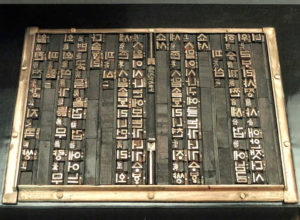
The earliest surviving woodblock printed fragments are from China. They are of silk printed with flowers in three colors from the Han Dynasty (before 220 A.D.). The earliest examples of woodblock printing on paper appear in the mid-seventh century, again in China.
As the name implies, it means carving a design into a block of wood.
In woodblock printing-
- The wood is carved and then the raised parts are colored.
- After that, a piece of paper or cloth is placed on top to transfer the ink to create an image.
- By applying pressure, either manually or using a press on the back of the paper, the ink gets transferred to create an image.
In Europe
By 1300, woodblock printing became a common method for printing religious images on cloth.
The images used to be quite large. However, when paper became relatively easily available around 1400, they switched to printing images on paper.
That’s how for the first time in the history, a design could be created and copied accurately.
Movable-type printing – 1041 :-
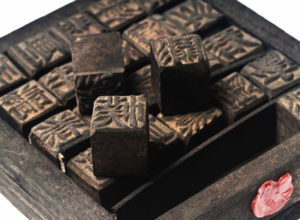
In 1041, Bi Sheng a Chinese artisan, engineer, invented the first known movable type system in China. He developed type characters from hardened clay.
The technique was similar to woodblock, but was specifically used for printing scripts. Movable printing was way more flexible than hand copying or block printing.
Before it came into existence, characters were engraved in one big block, which was very time consuming and costly. After finish the carving, ink was applied to the entire block and paper was pressed against it. Essentially, it is one huge stamp; imagine having one big stamp for one entire book page.
Bi Sheng changed the way ancient China printed documents. His Movable-type printing allowed letters to be configured and arranged in any order. Rather than carving an entire book into one huge block, characters are carved into small clay blocks. This allows you to rearrange the blocks and select the required characters instead of engraving from scratch.
The Gutenberg’s Printing Press :-
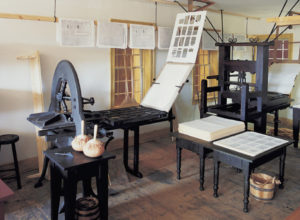
In 1436, Johannes Gutenberg started his work on the first movable type printing press in Europe and took almost 4 years to complete it. He was the first to create type of pieces from an alloy of Lead, Tin, Antimony, Copper, and Bismuth – components which are still used today.
With the invention of a faster and more durable printing press, the printed text was now widely available. Along with the wealthy class, the lower-class could also educate themselves through reading. And that’s what lead to a drastic change in their lifestyle.
‘The Gutenberg Bible’ – 1455 :-
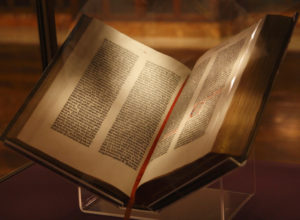
It was the iconic print moment of the 15th century. ‘The Gutenberg Bible’, printed in 1455, by Johannes Gutenberg and his associates, Johann Fust and Peter Schoeffe, was the very first book to be mass produced. Around 180 copies were printed, but only 48 copies are known to have survived. Before Gutenberg’s invention, every book had to be copied by hand. His invention made the mass production of books possible without sacrificing quality and changed the world.
The high quality and relatively low price established the typographical dominance of Western languages. The printing press spread rapidly across Europe, leading up to the Renaissance, and later all around the world.
Etching – 1515 :-
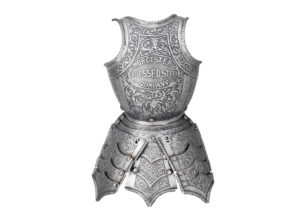
Daniel Hopfer was a German artist commonly believed to be the first who introduced etching to printing in the Middle Ages. However, his etchings were widely ignored by art historians.
The process involves printing from a metal plate, usually made of copper or zinc. The plate is first polished to remove all scratches and then covered evenly with a layer of acid-resistant varnish, called the ‘Ground’. A sharp tool is then used to scratch away parts of the ‘Ground’ following the design. Once done, the plate is dipped in acid to remove the unprotected areas of the etching ground. This creates indented lines that holds the ink.
To complete the process, the plate is placed on the paper and sent to the printing press to make a print.
Lithography – 1790s :-

Although this technique was invented in the late 18th century by Alois Senefelder, but it’s still commonly used today. This printing process is based on the fact that grease and water don’t mix together and that’s how the image is applied to a surface using a greasy medium. Later, a solution of ‘Gum Arabic’ is applied over the surface producing grease receptive images. Using lithographic Turpentine, the solution is then removed and ink only sticks where it’s required.
To finish it off, a paper is placed against the surface and the plate is run through a press. However, the technique wasn’t just limited to black and white printing itself.
In 1837, Godefroy Engelmann introduced chromolithography, a method for color printing using lithography which was in the beginning mainly used to reproduce paintings only.
The Rotary Printing Press – 1843 :-

In 1843, Richard March Hoe invented the Rotary Drum Printing Press, in which the images were curved around a cylinder. This printing press worked a lot faster than the earlier printing presses and the paper could be fed continuously through the press.
Offset Printing – 1875 :-
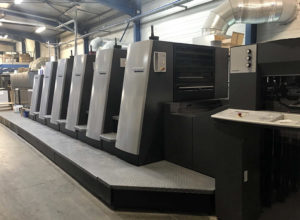
This printing technique came in two versions – in late 19th century by Robert Barclay of England for printing on Tin and, in early 20th century by Ira Washington Rubel from the U.S. for printing on paper.
Even though offset printing came almost 150 years ago, it still remains almost unchanged and is the most popular way of printing large runs. In offset printing technique the inked image is transferred from a plate to a rubber blanket and then to the printing surface.
Today, offset technique is used in combination with the lithographic process in the U.S. and is responsible for over half of all printing using printing plates.
Screen Printing – 1911 :-

In Screen Printing, ink is pushed through a mesh stencil onto textiles or paper.
- The Song Dynasty 960 – 1279AD
Screen Printing was first invented in China during the Song Dynasty (960–1279 AD). Later, Japan adapted this technique and updated it with newer methods.
- In Western Europe
- However, Screen printing didn’t gain large acceptance in Europe until the early 1910s when silk mesh was more available for trade from the East.
Few press manufacturers who seem to have used this technology were Roland (nowadays known as Man Roland) in 1911 and Komori Machine Works in 1923.
Currently, graphic screen-printing is widely used to create high volume or mass production graphics such as posters and display stands. Full-color prints can be created by printing in CMYK (cyan, magenta, yellow, black). Screen printing is ideal for printing on canvas and often used for t-shirt printing.
Inkjet Printing – 1950 :-
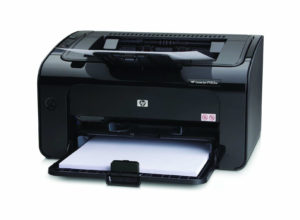
Thanks to inkjet printing, you no longer have to make direct contact with the paper. You can now apply the ink by spraying it through the jets.
The idea of inkjet printing dates back to the 20th century and this technology was first widely developed in the early 1950s.
In 1976, Hewlett-Packard developed the first inkjet printer. Though inkjet printers didn’t gain popularity until the mid-1980s. In 1977, Siemens invented the first DOD (drop-on-demand) inkjet printer that sprays ink where it is needed on the piece of paper.
Hewlett-Packard introduced the first thermal inkjet printer – HP Thinkjet in 1984. Later, he introduced HP DeskJet in 1988 which was sold for $1000. It was the first mass marketed and one of the widely used series of printers.
Laser Printing – 1969 :-

Inkjets opened the printing field for other printing techniques. Laser Printing produces high quality text and images by repeatedly passing a laser beam back and forth from a negatively charged cylinder-‘Drum’, within the printer. It then selectively collects electrically-charged powdered ink (toner), and transfers the image to the paper.
IBM 3800 and Xerox 9700 – the first laser printers hit the market in 1975. They were unusually expensive, but useful for specific applications such as cheque printing.
Digital Printing – 1991 :-
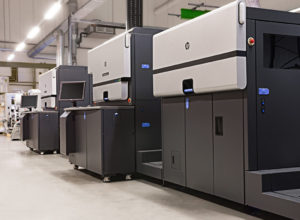
Printing has become faster, easier, and accessible to everyone with the advent of the digital age. It is digital printing that made it possible to comfortably print directly from digital files, that too, at home.
Digital printing takes off in 1993 with the introduction of the Indigo E-Print 100 and Xeikon DCP-1.
The industry has certainly come a long way since the advent of the first press in the form of wooden blocks.
Irrespective of their elementary nature, wooden blocks brought in a significant change in dissemination of knowledge that further paved the way for present advances in print machinery.




